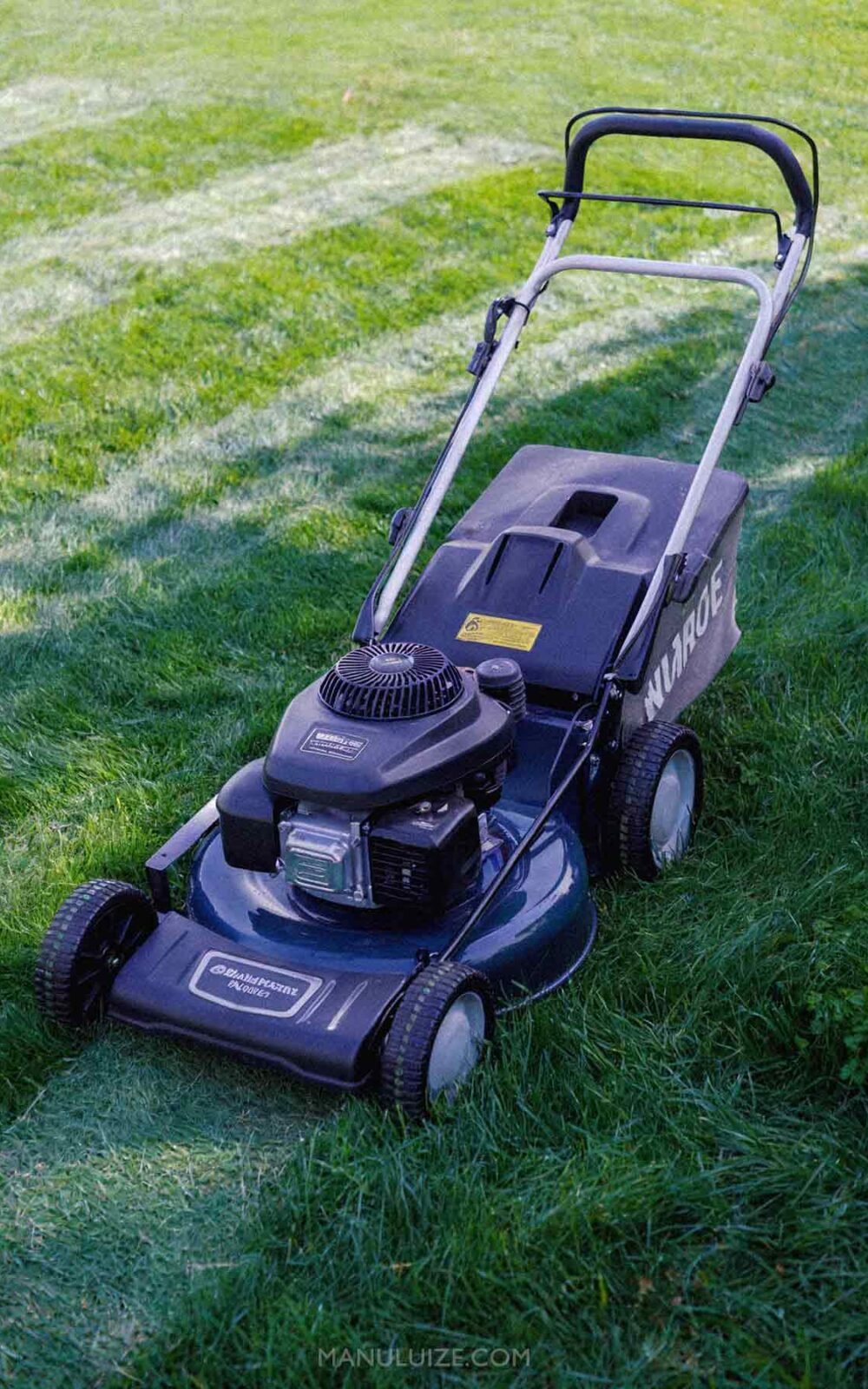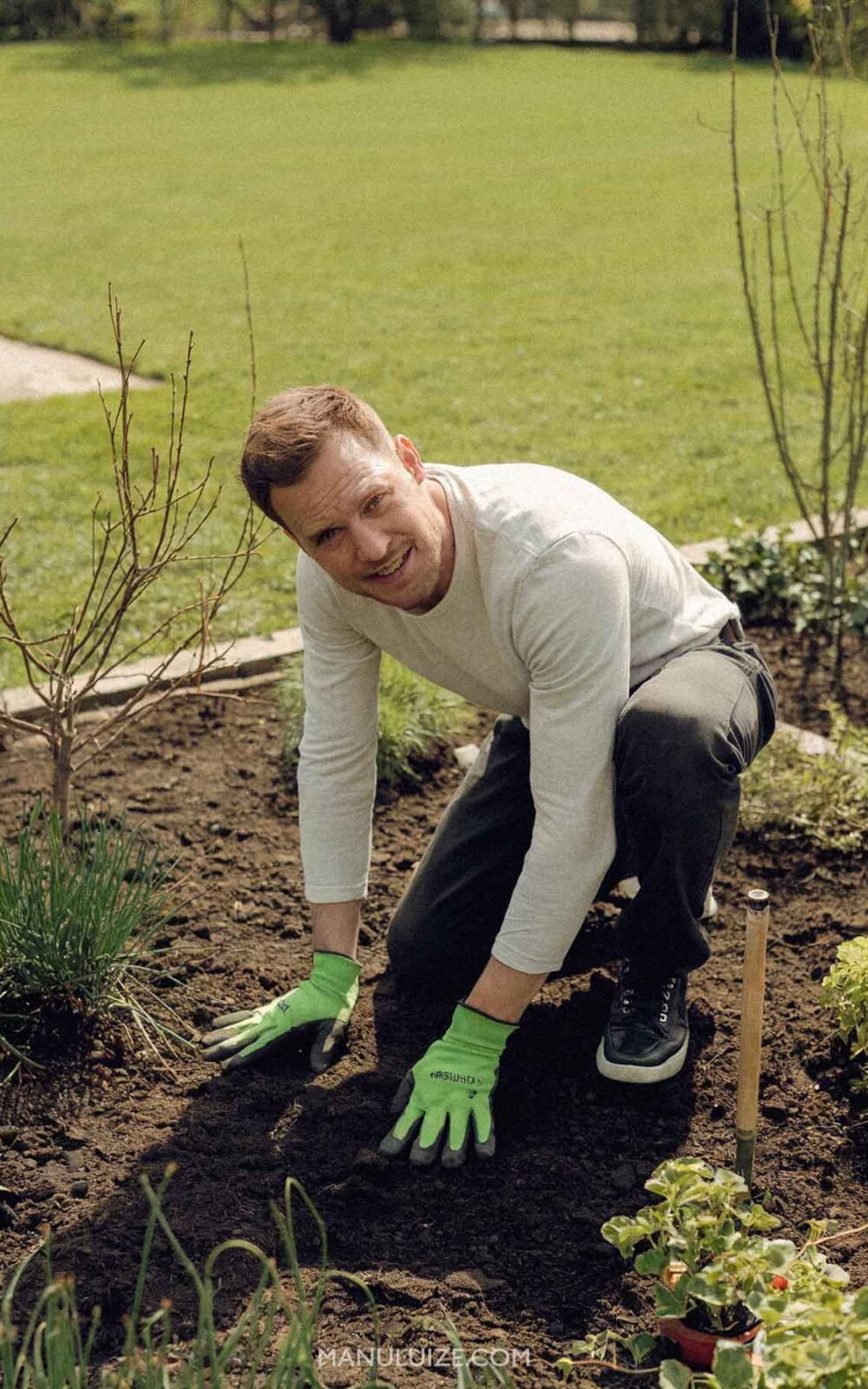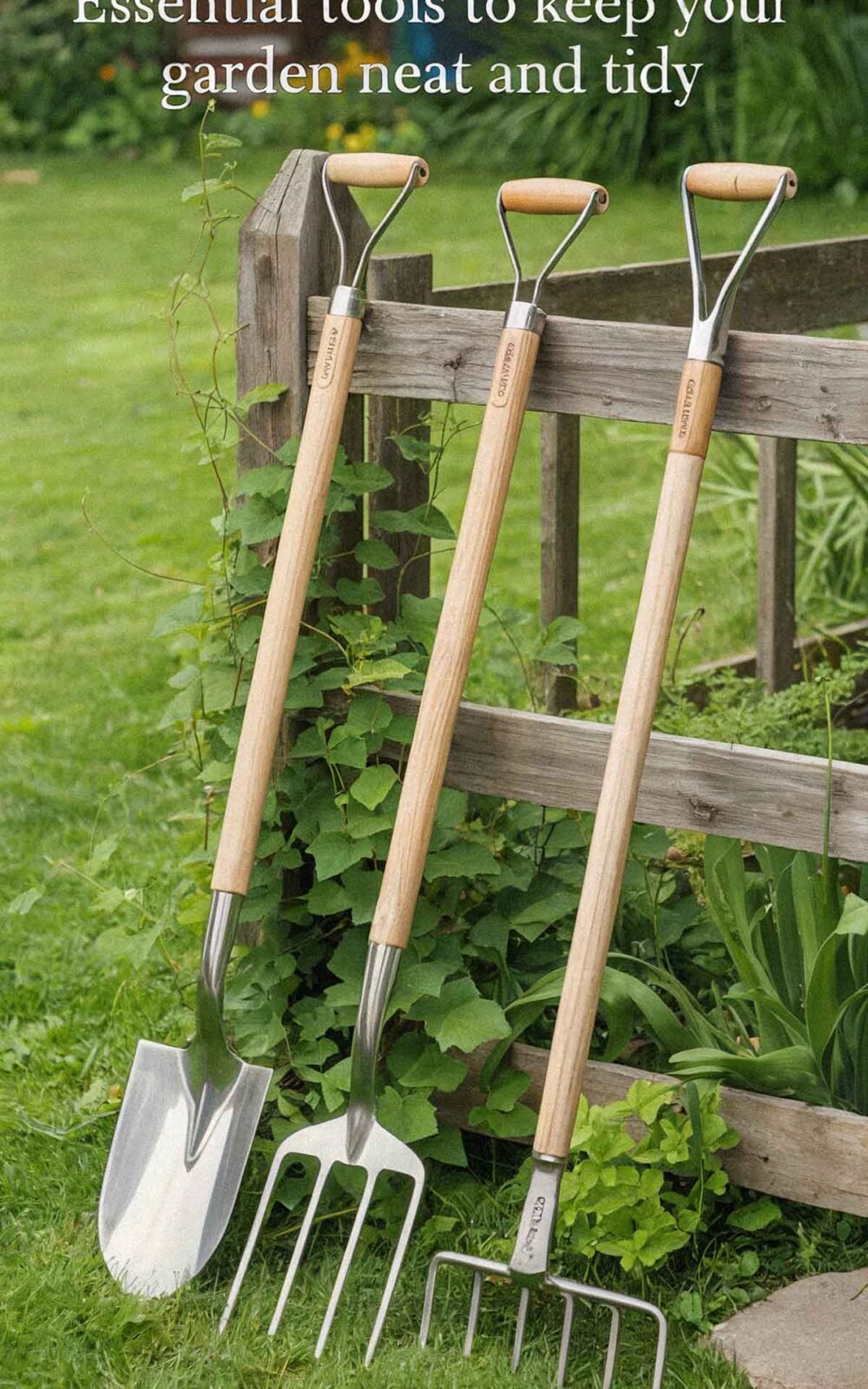Keeping your garden looking presentable isn’t just about cutting the grass every few weeks. While a lawnmower and a pair of secateurs may be the first tools that come to mind, they often aren’t enough for maintaining a tidy outdoor space.
Whether you’ve inherited a garden or are caring for one for the first time, there are several key tools that can make your job easier and more efficient. From clearing debris to shaping hedges and keeping your borders clean, the right equipment can save you time and effort while giving your garden a polished finish.
Here’s a breakdown of the must-have garden tools to help you keep things neat, practical and under control.

Start with the basics
Every well-kept garden starts with a few simple tools. A lawnmower and a pair of secateurs are often the first purchases people make, and for good reason. These cover the absolute essentials, trimming the grass and cutting back smaller plants, dead leaves, and light overgrowth. But while they help maintain appearances, they’re only part of what’s needed to keep your garden looking tidy throughout the year.
A lawn mower is key for any garden with a grassy area. Small gardens may only require a compact electric mower, while larger spaces benefit from cordless or petrol-powered options with adjustable cutting heights. It’s important to mow regularly during spring and summer to prevent uneven patches or clumps. Sharp blades also make a big difference in keeping your lawn neat and healthy.
Secateurs are ideal for light pruning tasks. They allow you to trim dead flower heads, tidy up shrubs, and remove damaged stems. They’re precise and easy to control, making them useful even for small balcony planters or tight corners. However, if your plants grow faster or taller, basic tools like these can quickly become limiting.
Next-level maintenance
Over time, plants grow in ways that can make a garden look messy. To keep your garden tidy and manageable, a few additional tools are worth considering.
A hedge trimmer is one of the most practical upgrades. It helps you shape hedges, bushes, and shrubs with clean lines that are difficult to achieve with manual shears. Trimming your hedges regularly improves their appearance, encourages healthy growth, and keeps them from spreading into walkways or neighbouring plots.
Another useful tool is a lawn aerator. Often overlooked, this tool improves the health of your lawn by punching small holes in the soil. This allows air, water, and nutrients to reach the roots more effectively. Aerating just once or twice a year — usually in spring or autumn — can help reduce lawn compaction and prevent waterlogging.
If you want to take the visual appeal of your garden one step further, consider investing in an edging tool. Sometimes called a half-moon edger, it allows you to cut neat lines between the lawn and flower beds or paths. This helps keep your borders clearly defined.

Tidy with ease
Even the most well-shaped garden can look untidy if it’s covered in leaves, grass clippings, or general debris. After mowing, trimming, or a breezy day, patios and pathways often end up scattered with loose material that quickly makes the space feel neglected. This is where clean-up becomes just as important as the cutting itself.
A traditional broom or rake can handle light sweeping, but these tools are often time-consuming and can miss debris in corners or uneven areas. For home gardens, the best battery powered leaf blower offers a practical solution. Cordless models are lightweight, easy to manoeuvre and quieter than petrol-powered alternatives.
Battery-powered leaf blowers are especially useful for gardens with gravel paths, decking, or awkward angles where sweeping is difficult. They’re also convenient for seasonal clean-ups, especially in autumn when leaves fall regularly and can become slippery if left too long. Some models even come with adjustable speed settings, allowing you to adapt the airflow depending on the surface or material you’re clearing.
Unlike petrol options, battery models require little maintenance and produce no emissions, which makes them a cleaner and more eco-friendly choice for everyday use.
Dig, move, and manage

Not every garden task involves cutting or clearing. Sometimes, you need to get into the soil itself. For that, a good shovel and rake are essential additions to your toolkit.
A shovel is one of the most versatile tools in any garden. It helps with digging holes for new plants, moving compost or mulch, and lifting out weeds with deep roots. Flat-blade shovels are useful for edging and levelling soil, while pointed versions are better for digging into harder ground.
A rake, on the other hand, is ideal for managing surface-level tasks. Garden rakes with metal tines are perfect for breaking up compacted soil, spreading materials evenly, and collecting larger debris. They also help prepare beds for planting by creating a smooth, level base.
Both tools are especially handy during seasonal changes. In spring, they can be used to prepare the ground for new growth. In autumn, they help with clearing and composting fallen material.
Little things that help a lot
Some of the most useful garden tools aren’t the largest or most expensive. They’re the small, everyday items that make outdoor tasks more comfortable and less tiring. While they’re easy to overlook, having them nearby can make a real difference to how you feel during and after your time in the garden.
A good pair of gardening gloves is essential. They protect your hands from thorns, splinters, and rough materials, and also help you get a better grip when handling tools. Breathable materials are ideal for warmer days, while rubber-coated options give extra protection when dealing with wet soil or compost.
Kneeling pads are another small but worthwhile investment. Tasks like weeding, planting or edging often require you to work close to the ground, which can put pressure on your knees and lower back.
Finally, consider getting a garden tub, trug, or compact wheelbarrow. These help you collect and move garden waste, tools, or soil without making multiple trips. Flexible tubs are easy to lift and store, while small wheelbarrows work well even in tight garden paths.
Every tidy garden requires a bit of effort, but the tasks are varied. Whether you’re managing a small courtyard or a larger outdoor space, understanding what needs to be done across the seasons helps you choose the right tools.






